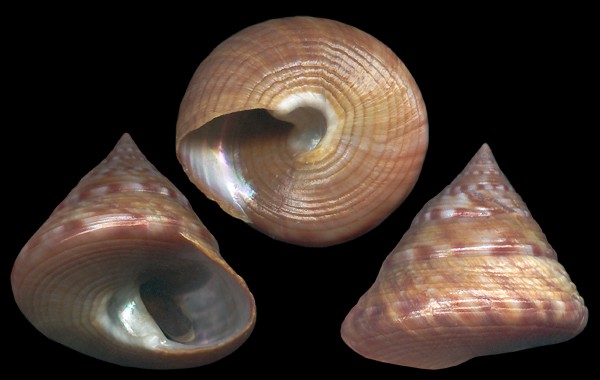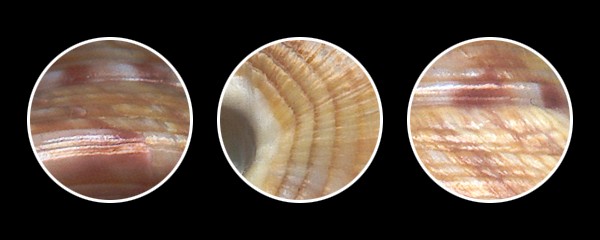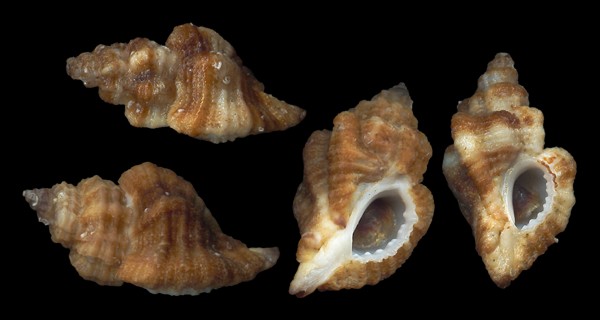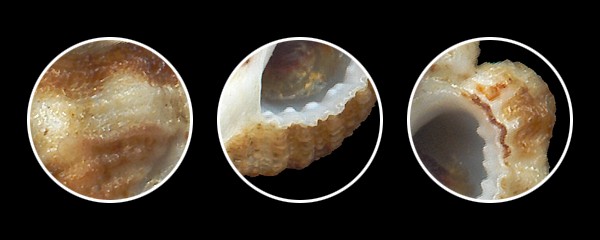Under red algae, on sea-wall, 1m upon low tide level.

23mm. The pattern is more jumbled.
The shell was found on top of the outer flank of the path, in its tuft of weeds.
In this portion, shells are numerous, and sorted by species:
a batch of Callios, a batch of Ocenebras, Callios again, etc.
The shell was found on top of the outer flank of the path, in its tuft of weeds.
In this portion, shells are numerous, and sorted by species:
a batch of Callios, a batch of Ocenebras, Callios again, etc.

This outer flank is a sloping wall, on which rest many Callios and Ocenebras.
The opposite side of the path delimits a tide pool colonized by Gibbulas & Ocenebras,
while some rare Callios crawl in fissures under our feet: the causeway, here, begins to decay.
The opposite side of the path delimits a tide pool colonized by Gibbulas & Ocenebras,
while some rare Callios crawl in fissures under our feet: the causeway, here, begins to decay.

